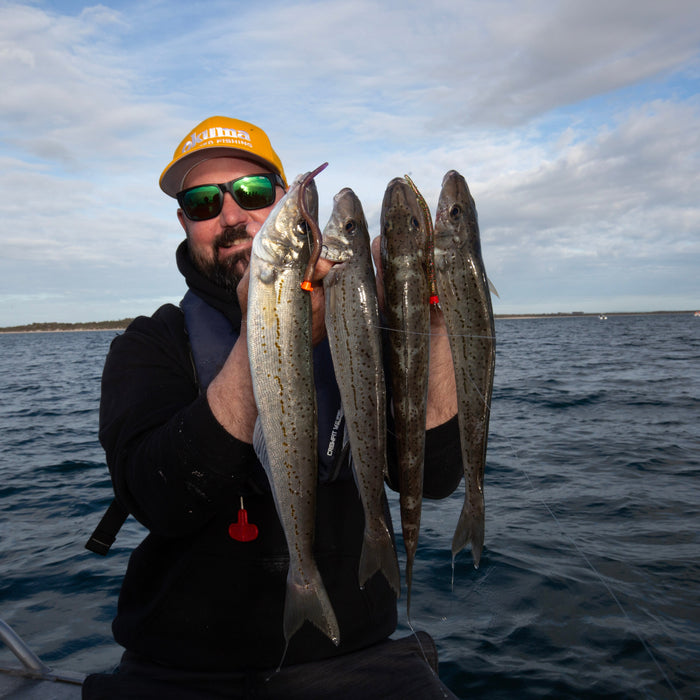
Flathead Fundamentals - How to Catch Flathead on Soft Plastics
Flathead are a popular target species that love eating soft plastics. In this article Justin Willmer breaks the species and techniques down, including loads of tips to get you hooked up.

Everything you need to know to be successful at fishing with soft plastic lures, all in one handy booklet that you can download and print today.

Flathead are a popular target species that love eating soft plastics. In this article Justin Willmer breaks the species and techniques down, including loads of tips to get you hooked up.

How to catch whiting on soft plastics, including rigging and fishing the TT Y-Ting System and ZMan 4” Finesse WormZ.

Blade lures are a versatile lure option that can be fished across a wide range of depths and environments, that appeal to a wide variety of fish species. In this article I want to take a closer look at blade lure design, a few different blades and their individual characteristics, where to fish blades, and effective retrieve techniques to get the bites.

The ZMan Micro Finesse BaitZ range of plastics has already proven itself on both finesse species, such as bream and trout, as well as many larger species that commonly feed on tiny bait, such as giant herring, tarpon, trevally and...

One very productive manmade structure is bridges, and in this article we cover the gear and techniques that consistently get me the bites for bread-and-butter species, such as bream, flathead, trevally and snapper, while also breaking down the bridge structure and where you should find the fish.

In this article we break down the ChatterBait design, what makes it such an effective fish catcher, how and where to fish it, and take a closer look at a couple of ZMan ChatterBait additions that are perfect for our local species, right down to the Aussie Custom Colour range.

Let's take a look at a selection of different lure presentations that have all proven effective on barramundi, along with when you might tie them on and tips for fishing them.

Justin gives us some tips for targeting flathead land based, including gearing up and the where, when and how of land-based lizards.